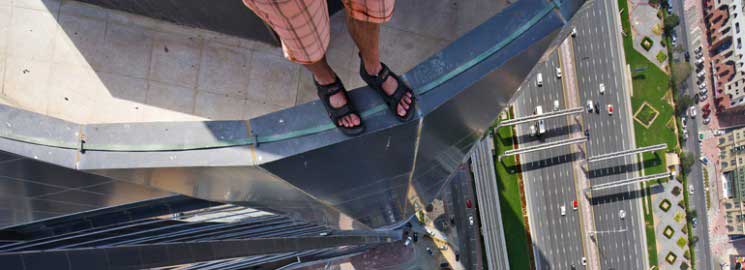How far would you go to snap the perfect selfie? In an effort to make themselves stand out from the crowd and get more likes on social media people are literally dying to get that special shot. This year alone has seen a disturbing rash of serious injuries and even deaths sustained while selfie-ing. In fact, as of June, this year, more people have died while taking dangerous selfies than people have been killed by shark attacks.
Robert Cornelius, an early American photographer, has been creditedwith taking the first selfie: in 1839, Cornelius, using one of the earliest cameras, set up his camera and ran into the shot. The broader availability of point-and-shoot cameras in the 20th century led to more self-portraits, with many using the (still) popular method of snapping a photograph in front of a mirror.
Selfie technology took a giant leap forward with the invention of the camera phone. Then, of course, there was the introduction of the selfie stick. For a brief moment the stick was celebrated: Time named it one of the 25 best inventions of 2014. But critics quickly criticized it and the sticks are now banned in many museums and parks, including Walt Disney Resort. Despite the criticism directed at selfies, their popularity is only growing. Conclusive numbers seem lacking, with estimates of daily selfie posts ranging from one million to as high as 93 million on Android devices alone.
A British report from this year also suggests younger women are more active participants in selfie-taking, spending up to five hours a week on self-portraits. There are about 58 million photos at the moment on Instagram with the hashtag #selfie where the largest numbers of selfies are taken in Australia, with the US second and Canada third.
Based on my research this hazardous behavior may be partly enhanced by social networking and the need for “likes,” clicks, and shares. We’re living in this highly self-promotional social media age where we need to not just document everything we do but place ourselves into it as a way to document the experience and share it with others. Indeed, many dangerous wild life selfies and just recently in New Brunswick dangerous transmission tower selfies have gone viral on social media and YouTube, something that seems to inspire other people to take similar risks. Evidence suggests that people simply like viewing faces. Selfies attract more attention and more comments than any other photos, and our friends on social media then reinforce selfie-taking by clicking out ‘likes’ and other forms of approval on social media.
It looks like you should try and keep your ‘likes’ and ‘thumbs-up’ to yourself if you see any of these very dangerous selfies on social media. Adding approving comments or being 1 10 thousand likes is only fuel to the fire which will only spark others to follow-up with something more dangerous.


Leave a Reply